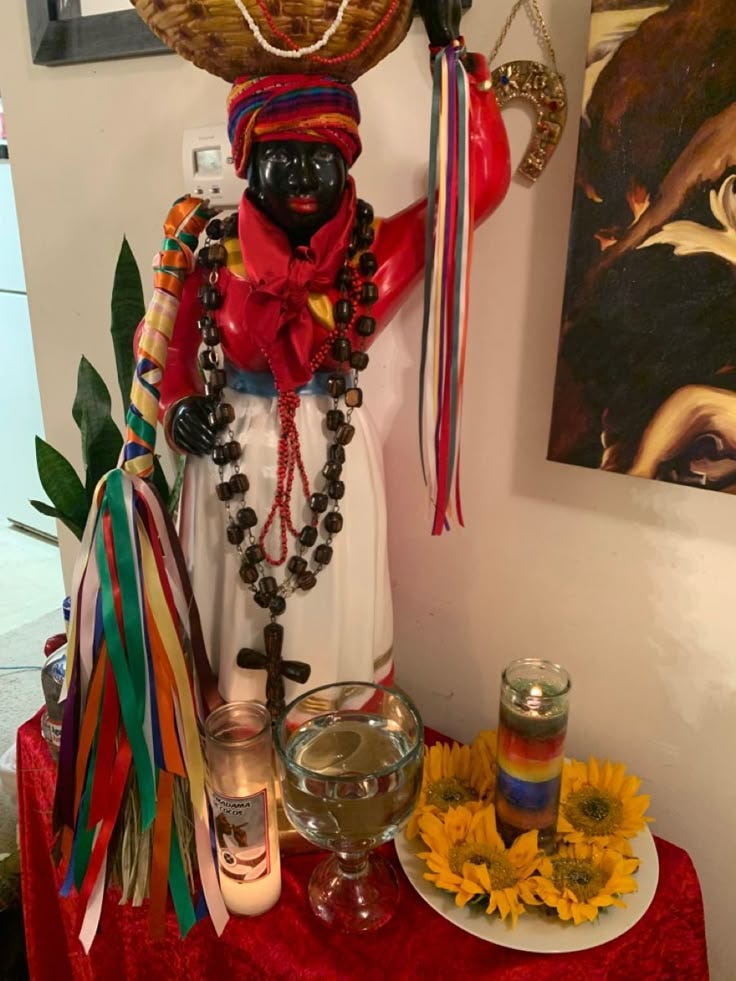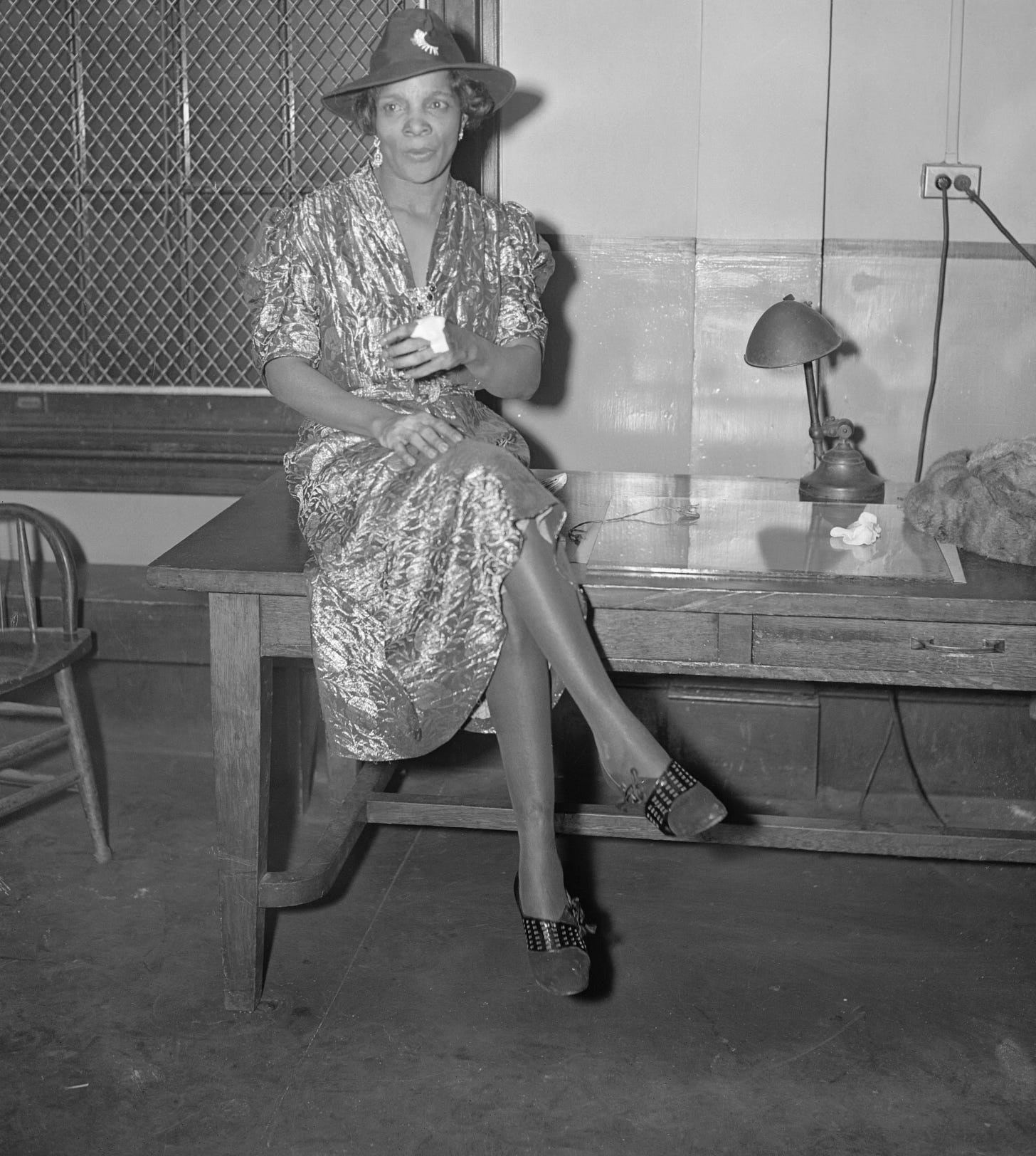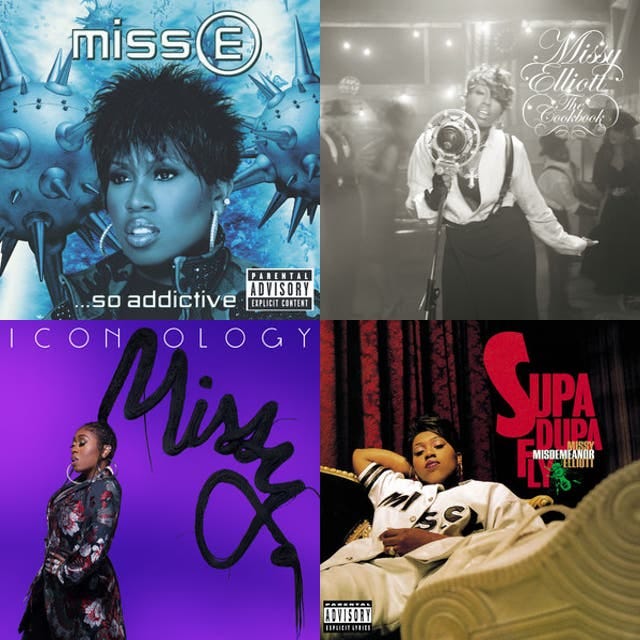Hey Family,
Writing this next post in my series about the commissions has taken me a while because La Madama can be a very polarizing figure. Often, the imagery available of La Madama can be pretty one-dimensional and misleading. The shame and legacy of chattel slavery in the Americas can often make people have a visceral reaction to statues of dark-skinned Black women donning full skirts, aprons, and headscarves. I created a mini informational zine a few years back where I boldly proclaimed that Madmas are not mammies; I still stand by that statement.
The origins of Aunt Jemima are tricky, but I’ll do my best to pinpoint some key moments. The name was a play on Jim Crow, with the iteration being “Miss Jim-Ima Crow”. The original drawing was commissioned by Quaker Oats to be drawn by illustrator Haddon Sundblom, the same artist who created the Santa Claus popularized by Coca-Cola. Aunt Jemima was a fictional character plucked from the vaudeville circuit and used by the Pearl Milling Company to sell pancake mix. At the core of this very flat and dehumanizing imagery is corporate greed, capitalism, and blatant racism. Aunt Jemima is not La Madama.
Traditionally, La Madama refers to an archetype of an African-born or African-descended woman who worked in the home, often with the family. These were the women who had an intimate knowledge of herbs, healing, midwifery, and spiritual magic. While not all spirits who resided within the commission of La Madama were enslaved, a lot of these women were. Some of them were the cooks of the plantation, midwives, and even wet nurses. However, it would do everyone who engages with the Madama spirits of their court to unpack their feelings about the stain of slavery and the residual harmful stereotypes that emerged once Black people in the Americas gained their freedom. It is not a coincidence that when these women were not bound to a lifetime of servitude, their images were distorted into the mammy trope.
Many espiritismo practitioners may be familiar with the names Tomasa, Josefina, and Francisca. These were African women who were brought to the Americas through the Transatlantic Slave Trade. They ended up in Venezuela, Cuba, Haiti, Puerto Rico, and other places throughout the Caribbean. Through the course of their lives, they achieved a level of status and success for the work they did for the community. The impact of these Black women, and countless others, can be felt and seen in thousands of altars across the globe. They can be heard in dimly lit misas giving evidencias, advice and cleanings. They can be seen dancing in tambors, coming down laughing, asking for cigars and hot black coffee with molasses. If you are of African descent, you most likely have a Madama that walks with you. Much like the commission of the Congos, individuals must unpack whatever unchecked racism, classism, and biases they might have before working with this commission. If you have an issue with giving Black women respect in real life, how can you properly venerate and respect the spirit of La Madama? Can one respect the commission and the spirits that reside in it while actively denigrating the image of Black women? I don’t think we can separate the two, to be honest.
Let’s take the iconic role of Mammy played by Hattie McDaniel in Gone With The Wind. There is an infamous line where another housemaid, Prissy, played by Butterfly McQueen, proclaims, “I don’t know nothing bout birthing no babies!” This is a deliberate attempt to dilute the image and invalidate the knowledge that these women had regarding herbalism and midwifery. More often than not, midwifery and herbalism were practiced communally, and while Prissy would not have known everything about the practice, she would’ve shadowed an elder and acted as an assistant. Slave owners would not provide adequate medical care for the enslaved Africans on their plantations. At best, the plantation owner would call a veterinarian. This is where the Madamas of the plantations would step in to bridge the gap. By providing herbal remedies for wound care, mild intestinal ailments, abortifacients, midwifery, and postpartum care, Madamas were instrumental to the physical well-being of the enslaved. It’s not a coincidence that midwifery was banned as a practice in the United States after the emancipation of the enslaved. Midwives could not exist when there were “decent” white male doctors. For one, women were not encouraged to enter the medical field. Moreover, African-descended people were especially not welcome in these medical spaces.

The Western Center on Law & Poverty touches on this: “Once the field of medicine became 'professionalized' and legitimized by the legal system with the invention of the American Board of Obstetrics and Gynecology in 1927, physicians sought to dominate the field of birth work as its primary practitioners. Their claim to jurisdiction spurred racist propaganda campaigns depicting Black midwives as caricatures falsely accusing midwives of being “incompetent”, “witches”, “unclean”, “savages”, and “untrustworthy”.1
Now that we can see the racist and patriarchal conditions that aided in the discrediting of midwives, we begin to understand how and why the mammy trope emerged and was sustained. Where there is power and influence, there is opposition. Madamas as midwives, healers, and spiritual leaders were living representations of agency and authority at a time when Black people were vehemently being denied these things in White society. Even today, Black women are often regarded with disdain in mainstream media, but we have so many positive manifestations of La Madama throughout history.
One of my favorite Madamas in Black history would be the mother of the numbers game that evolved into what we know as the New York State Lottery, Stephanie St. Clair. From the 1920s until she died in 1973, St. Clair was also known throughout Harlem as Madame St. Clair. At a time when Black people were systemically denied access to funding for their business enterprises, St. Clair existed as an option for Black entrepreneurs to start and sustain their ventures. A vocal opponent of police brutality and an advocate of voting rights, St. Clair was known to use The New York Amsterdam News to educate Black people about their civil rights. The numbers game at that time was extremely male-dominated, and St. Clair was a very prominent figure within that space, even resisting the encroachment and advancement from powerful men of her time like Bronx mobster Dutch Schultz.
Madame St. Clair was also fiercely independent at a time when marriage was a highly coveted social institution. In November of 1929, The New York Amsterdam newspaper ran an advertisement containing a ¾ page-sized photo of a then 32-year-old St. Clair with the following quote: “To Whom It May Concern: I have received letters and telephone messages from men which have annoyed me very much and I take this occasion to ask them publicly to please not annoy me. I, Mme. St. Clair, am not looking for a husband or a sweetheart. If they do not stop annoying me, I shall publish their names and letters in the newspaper.”2 While St. Clair did marry later in life and ultimately would retire from the illicit life of racketeering, she focused her efforts on philanthropy and political activism and never had children.
I think it’s important to reflect on these women in our bloodlines and throughout history who gave so much of their essence, care, and consideration to the protection and advancement of the community. Within my own family, a highly revered Madama who contributed greatly to the advancement of my family but never had children was Maggie Wyatt. Aunt Maggie was my great-great grandmother Edith Kittles’ older sister. She was also a close friend of educator and activist Mary McCloed Bethune of Bethune-Cookman College. Aunt Maggie was directly responsible for my family's migration from Bamburg, SC, to Brooklyn, NY, in the 1920s during The Great Migration. The amount of influence one person can have on an entire bloodline is incredible.
Last but not least, we have the biggest Madama of Hip Hop, Missy Elliot. I had the pleasure of seeing Missy in concert last summer, and she did not disappoint. Not only is she a genius of visual storytelling and sound, but she has put on so many Black artists throughout her tenure in music. At a time where the music industry was hell bent on pushing artists with a specific look, Missy brought many artists into the spotlight with her. Whether through features on her tracks, introducing artists to the airwaves, writing, or producing for, Missy has had her hand in pivotal black music history. Not only did Missy create iconic moments - she was always willing to share what she had. Tweet, Nicole Wray, Da Brat, Lil Kim, Ms. Jade, Trina, 702, Eve, SWV, Fantasia. Missy kept us fed in Black womanhood of all flavors! I believe she is one of hip hop's best living icons. When I think of Missy and her magical influences, I am reminded of the 7 Madamas statue.
Another thing to note about Missy: I do believe she successfully subverted the mammy archetype by leaning heavily into her creative visuals and lyrics. At first glance or even listen, one might not think of Missy Elliot as a sexual being, but I honestly believe it's because of the conditioning of our media to not see larger, darker Black women as desirable. She has so many songs; Pussycat? Get Ur Freak On? One Minute Man?! Anyone who says Melissa Elliot isn’t sexual hasn't been listening to what she’s been putting down.
In short, many characteristics come together to form this beautiful commission of influential powerhouses that we call La Madama. They are not mammies; they are leaders, healers, vast libraries of ancestral intelligence, and strategists of the highest order. In timelines where they were told they had no power, they crafted some out of thin air. The Queens of making something from nothing. Ultimately, I think the best thing you can do with this commission is to respect their wisdom, their image, and their agency. Work on deconstructing any ideals you may have about how women who look like them are supposed to act and be. They are everything.
Until Next Time,
Nikki
Black Midwifery in the US February 26, 2024, Etecia Burrell https://wclp.org/black-midwifery-in-the-us/
November 20, 1929, the New York Amsterdam News https://blackquotidian.supdigital.org/bq/november-20-1929








I learned so much! Thank you for sharing your knowledge and I shall greet my altar with an extra pep in my step today. ✨
Cousin, you’ve done it again. A delicious and insightful read every single time. I’m also giggling because I just fed my Madamas this morning. You really can’t make this up lol. You’re always on time. 💓